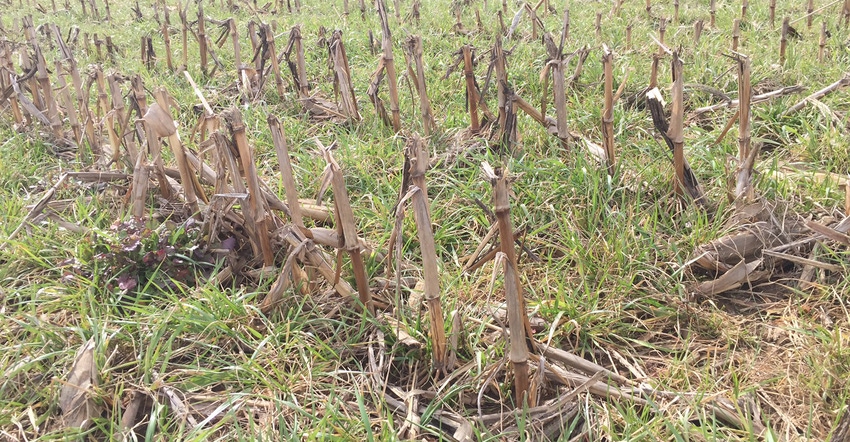June 8, 2017

By Tom J. Bechman
John Cobb has spent most of his career in the retail ag business. A few years ago, Cobb, manager of a CPS dealership at Waverly, Ky., saw potential for cover crops in his area.
“We have very productive soil, but most of it is also rolling,” he says. “It was obvious that cover crops could reduce soil erosion, plus provide other benefits.”
The problem, he notes, was getting consistent, adequate stands of cover crop. Most people in his area were trying annual ryegrass. Sometimes it was too dry when they seeded it after harvest to get good germination.
“We found a coating that we can apply to the cover crop seed,” he says. “Everything that the seed needs to germinate and get going is inside the coating.”
Cobb says it requires a relatively small amount of moisture to initiate germination of the coated seed. The coating tends to soak up moisture that is available, he says.
Farmers tried it for the first time in the fall of 2013, Cobb says. “We’ve had guys getting good, consistent stands with it for the past four years. It’s really taking off in this area.”
Cobb says the coating is patented. The coated seed has the same weight and density as granular fertilizer.
System approach
Most customers apply the seed mixed with fertilizer after harvest, Cobb observes. Since weight and density are the same, it spreads well and provides good coverage across the field.
So far they’ve only coated annual ryegrass. For 2017, they’re coating and offering a mixture of annual ryegrass, crimson clover and brassicas, he notes. More people are looking to gain more benefits by adding other species of cover crops to the mix they seed, he explains.
The problem with annual ryegrass, according to most agronomists who work with cover crops, is that the farther north you go, the earlier in the season it needs to be seeded. Otherwise it may not obtain adequate growth before fall ends to allow it to overwinter successfully. As you move north of Indianapolis, for example, recommendations often call for seeding it in mid- to late September. Crops often aren’t harvested yet in that region — especially not corn.
That’s why some farmers have developed seeders on high-clearance rigs so they can interseed cover crops between corn rows or into soybeans before harvest. Others opt to fly-on cover crops to get them started earlier in the fall.
Cobb hasn’t tried aerially applying coated seed, but believes it would be successful.
“Being able to apply coated seed with fertilizer has definitely made a big difference to growers in our area,” he says. “We now have a way to get a consistent stand of ryegrass up and going, whether we get much rain after spreading or not.”
What about cost? Cobb says typically it costs about $24 per acre to establish ryegrass, applying it with fertilizer at the rate most farmers use in his area.
For more details, contact Cobb at [email protected].
You May Also Like




